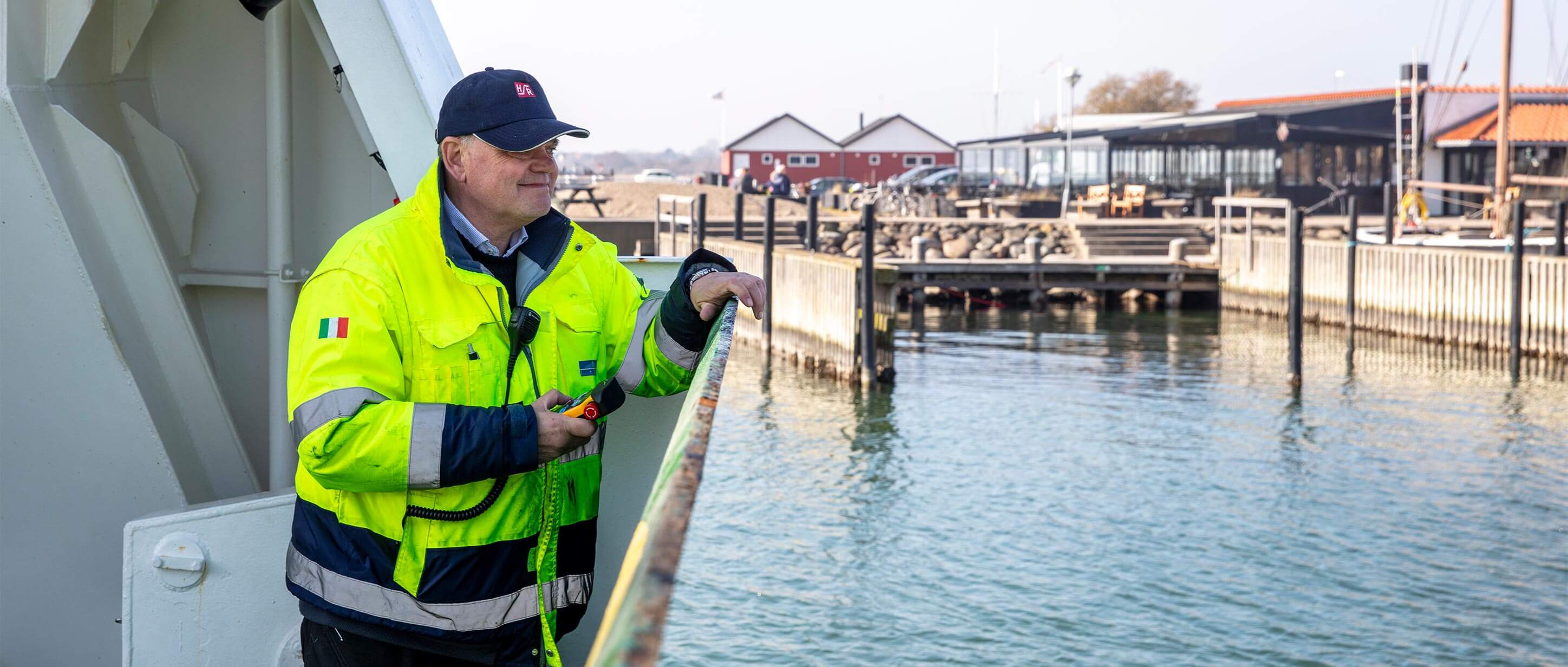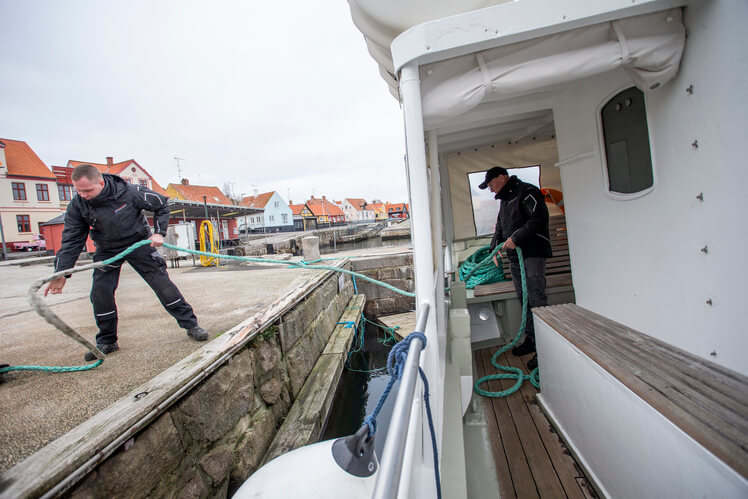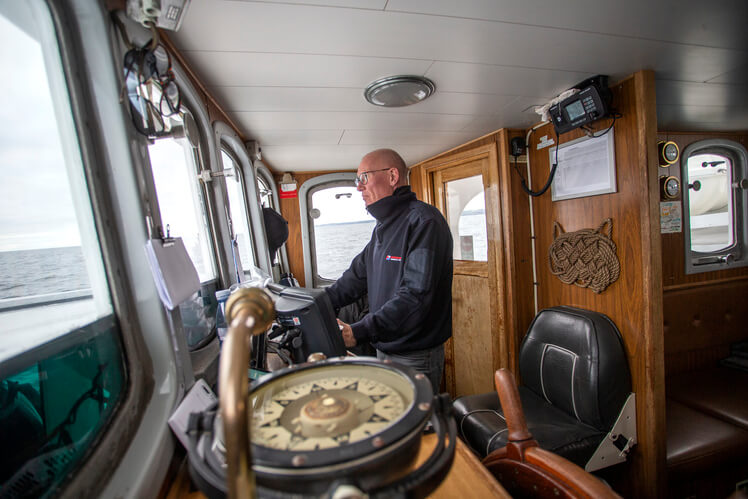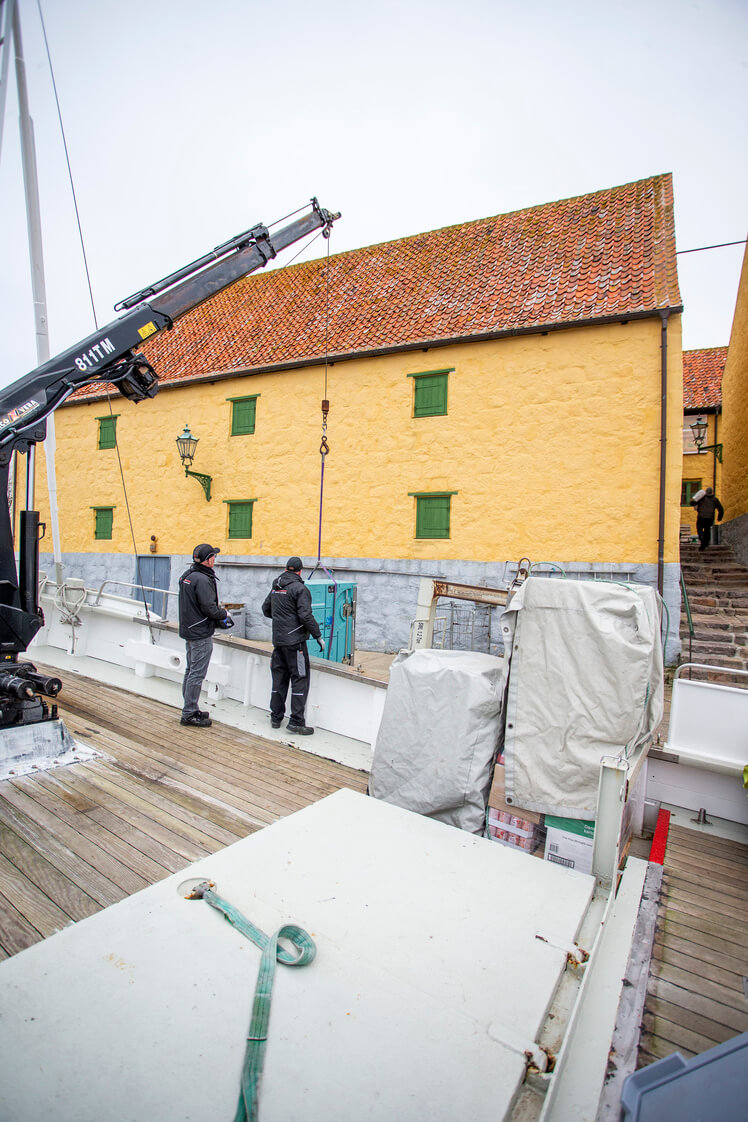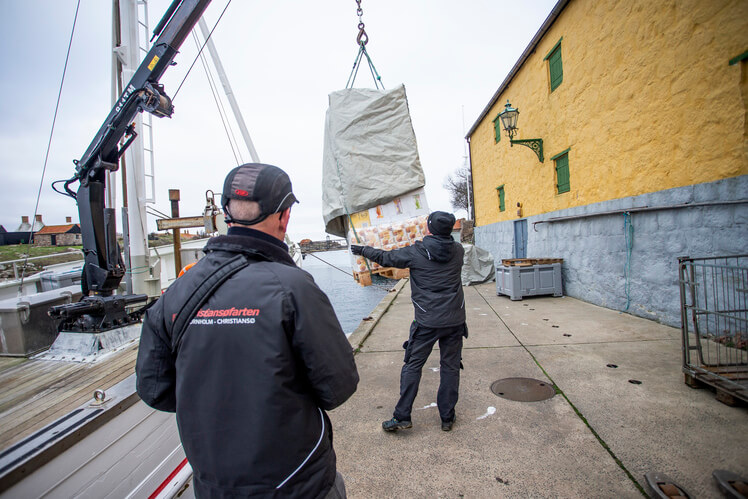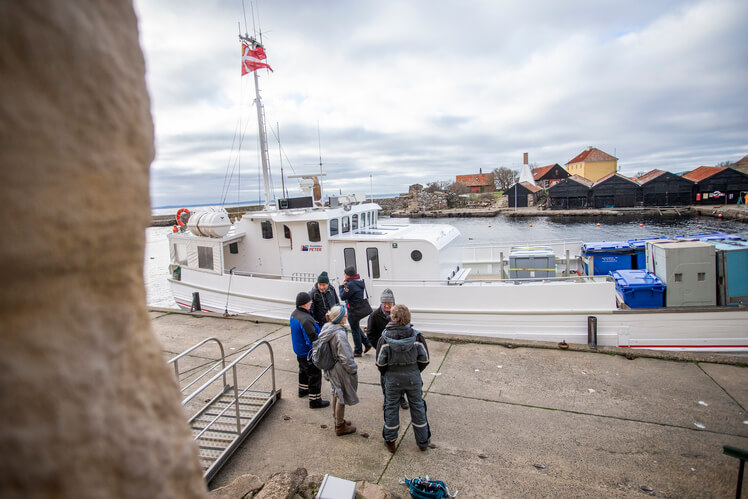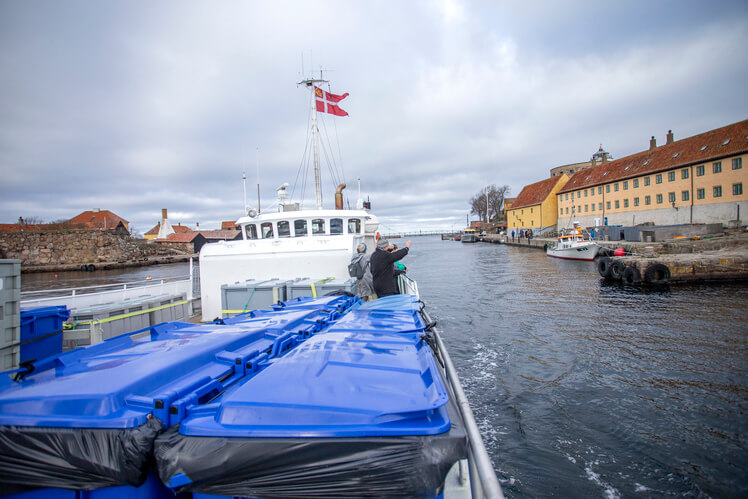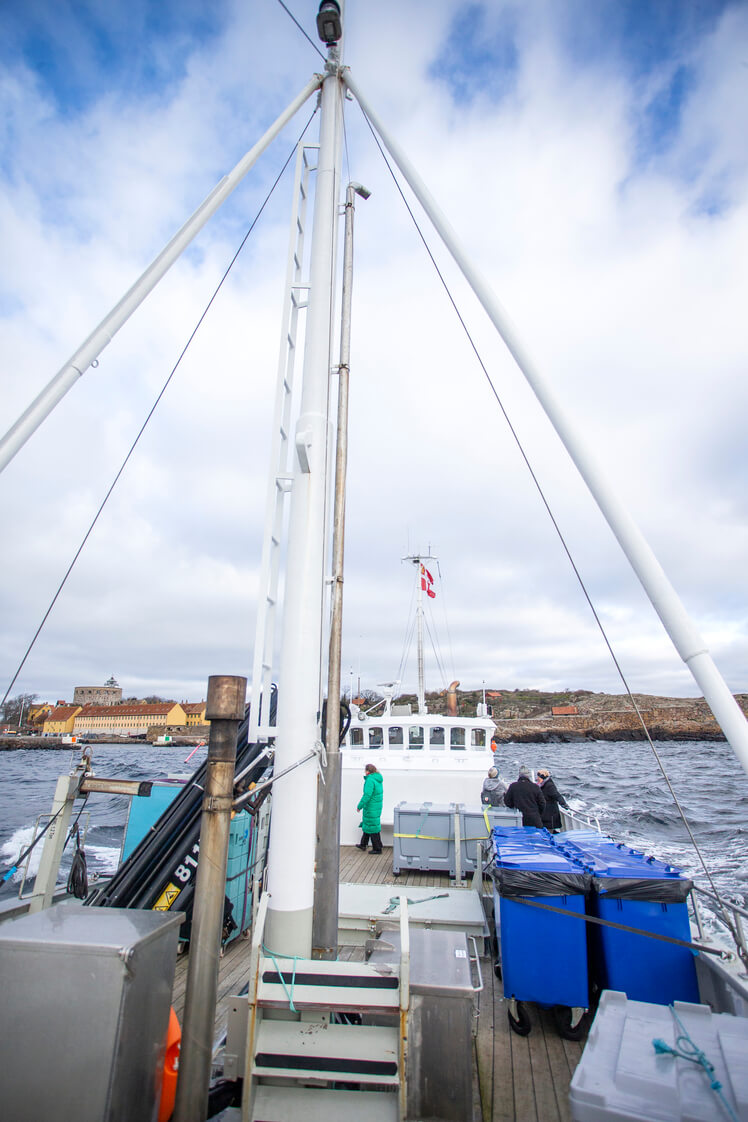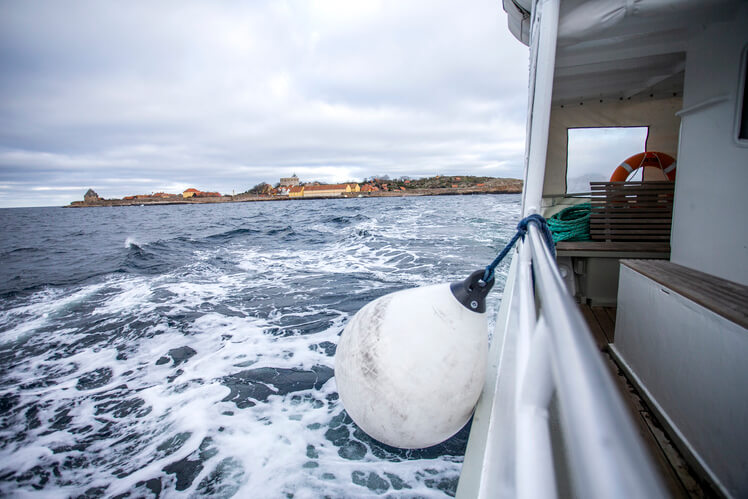The distance between management and crew is virtually non-existent in Christiansøfarten, which is among Denmark's smallest shipping companies. This means, among other things, that decisions regarding, for example, safety measures can be implemented very quickly.
With only two ships to its fleet, both designed exclusively for foot passengers, Christiansøfarten is not exactly one of the heavy players on the Danish shipping scene. On the other hand, the small Gudhjem-based company is an excellent example of how thought can very quickly turn into action.
This is but one of messages relayed to the UFDS from Simon Damkilde Christensen, who is the newest of the shipping company's three co-owners, while continuously emphasizing the importance of a good team spirit in a modest manner.
»We in the management take part in sailing the ships, so we are always together, and therefore very attentive towards safety related issues. We use the Seahealth program to measure everyday tasks such as mooring, heavy lifting and things like that, and we can quickly adjust the processes to accommodate a new initiative,« he says.
The small, quick adjustments are largely the way it is done in Christiansøfarten, where challenges are handled as they arise, such as calls from the Danish Maritime Authority, implementation of safety plans or just putting an extra mooring line at night.
»We solve stuff verbally and then enter it into our Safety Management System at our safety committee meetings. That's how it works in a small organization like ours. When the meeting is over – or the coffee cup is empty – we’ve decided what to do, so it’s very short step from thought to action,« Simon Damkilde Christensen says.
Like his two colleagues in the ownership, Peter Stange Jensen, and Jens Hede Madsen, he has a maritime background with an education as a master mariner from Marstal Navigation School behind him. Thus, all three can contribute with professional and practical knowledge when it comes to running the company.
In total, Christiansøfarten employs seven full-time staff, in addition to about 10 seasonal employees – including many returning year after year – who join in the summer season, when both ships are in operation. During the cold months, the larger vessel, Ertholm, is in dock, while the smaller mail boat Peter handles the route to the small islands east of Bornholm.
»We're all over the place and it's a very tight-knit group that can talk about anything. Everyone knows what's going on, and if there's something new, it's solved pretty quickly, because we're together almost all the time during the busy season,« Simon Damkilde Christensen says.
»Talking about safety, it's absolutely priceless to have the same people returning again and again because they know the ships and the routines, the equipment and so on,« he adds.
Broad ownership of safety
Originally a sailor and later an independent consultant in the shipping industry and contributor to new builds abroad, native Bornholmer Simon Damkilde Christensen joined Christiansøfarten's ownership and management as of 1 January 2023.
It was actually a comeback in the senes that he – as he puts it – ‘flirted with the maritime world in his formative years' in Christiansøfarten, where he has also been employed on several occasions.
With that connection to the place and understanding of the environment, it almost goes without saying that he – like the other owners – takes great ownership of not least the safety throughout the company.
»We take part in maintaining the ships ourselves over the winter, and the people taking the decisions in the safety committee are also the ones on display when the Danish Maritime Authority comes by for an audit. So, there's a lot of ownership,« he says.
Specifically, the safety committee consists of one of the owners, an employee and a ship mate in rotation, with somewhat lower activity levels this time of year, until Ertholm is put back into operation around Easter.
For now, the mail boat Peter, as mentioned, serves the 75-minute route (Ertholm sails a little faster and can handle it in 55), transporting both freight, cargo and the islanders themselves, in addition to the few day-trippers joining from time to time.
»We use the winter to prepare for the summer season for Ertholm, so it can sail every day until the autumn holidays, weather permitting. So different maintenance, upgrades, inspections are now handled here, making sure everything is optimized when she goes back into operation,« Simon Damkilde Christensen explains.
On the quieter crossings this time of year, a different type of safety risks is relevant compared to the sold-out departures in the summer. Waste containers and pallets of groceries set forth a different type of requirements than families with children and tourist groups.
»We put a lot of focus on safety, even here in the winter. Both crew members of Peter are trained in the necessary crane work, use of equipment and fastening things properly. Several of the year-round employees can sail both ships, so there is a lot of flexibility between the employees and the ships,« Simon Damkilde Christensen says.
A community operated route
Christiansøfarten's fleet is a story in itself. The mail boat Peter dates back to 1930, when it was built as a cargo ship at Ring-Andersen shipyard in Svendborg. After a rebuild in 1970, it has sailed with mail, freight, and passengers.
The larger Ertholm was built at HUSUM shipyard in Germany in 1967 for the crossings between Simrishamn in southern Sweden and Allinge, as well as Bornholm – Christiansø, which quickly became the main focus. The ship can carry 294 passengers, but after the coronavirus pandemic, the number has been set at 245.
Both ships have been heavily upgraded over the years, with new main engines, lighting systems, cranes, bow thrusters and generally modern equipment. In addition, both are connected to shore power when in port, both for environmental and material reasons.
As a core strategy, frequent maintenance has always been prioritized, including top to bottom paint jobs every spring, as there is simply no room for breakdowns, and certainly not during the summer, as Simon Damkilde Christensen emphasizes.
»We carry everything to and from Christiansø; building materials, waste containers, moving loads, food, you name it. It's a bit of a community operated route, and we usually have a sense of what to deal with each day. Could be dangerous goods, which we will of course handle according to current rules,« he says.
On the crowded passenger departures, which are often fully booked several weeks in advance during July and August, the attention shifts to the more human relationships, such as keeping an eye on the younger guests on board, perhaps making a few announcements over the loudspeaker in case of bad weather.
»An hour at sea is more than enough for people to get seasick, and if the weather’s really against us, then cancelling is an option, but again it's a decision we make right up to departure. At a certain wind direction, we can also sail from another port,« Simon Damkilde Christensen explains.
The quick and effective decisions are another example of the short chain of command in Christiansøfarten, and the close affinity the owners have with the ships. As mentioned, all three co-owners take part in the maintenance processes during winter and can address issues as they appear.
»If we discover something, we solve it immediately and make sure that all employees are informed about whatever change or new initiative that might be underway. Communication is very important, along with a safe space to discuss suggestions or ideas. Fresh eyes can sometimes see different things,« Simon Damkilde Christensen says.
To this end, he points to the importance of being open towards new initiatives, and generally having a culture where you can talk about things, which all other things being equal is less of a hassle in a small organization.
Invaluable local knowledge
In the same way as in Stena Line – albeit on a somewhat smaller scale – Christiansøfarten has, as mentioned, many seasonal employees who return year after year, just as the three owners boasts a long tenure in the shipping company.
The accumulated experience is extremely valuable for daily safety, as Simon Damkilde Christensen also points out, when the vessels have to be maneuvered in and out of the small natural harbors that Christiansøfarten sails on its regular route to and from the rocky island in the Baltic Sea.
»When wind and waves are coming from a given direction, it is just priceless to know which direction to put mooring lines, walkways and all these little things that you can’t just learn, including good cooperation with the guys in the port on Christiansø,« he says.
Specifically, the port on Christiansø is divided into a northern and a southern call, each with their own options and limitations. In the northern port, for example, not all types of goods can be unloaded due to the docks being slightly different than in the south.
With this type of local knowledge firmly anchored in the organization, Simon Damkilde Christensen looks forward to Christiansøfarten continuing for many years to come with safety at the top of the small organization, where initiatives becomes reality almost simultaneously with decisions being made.



